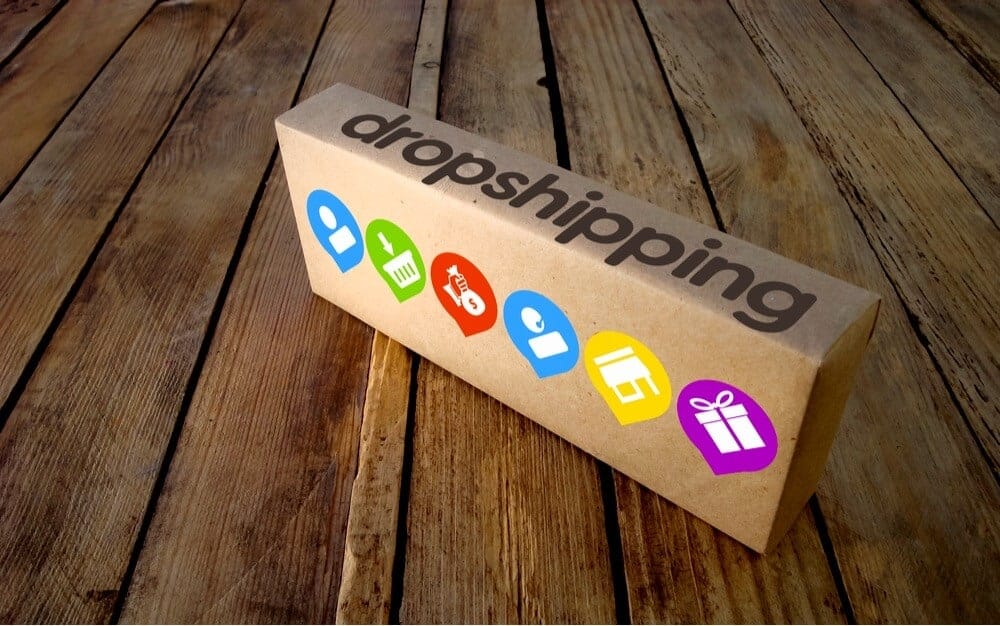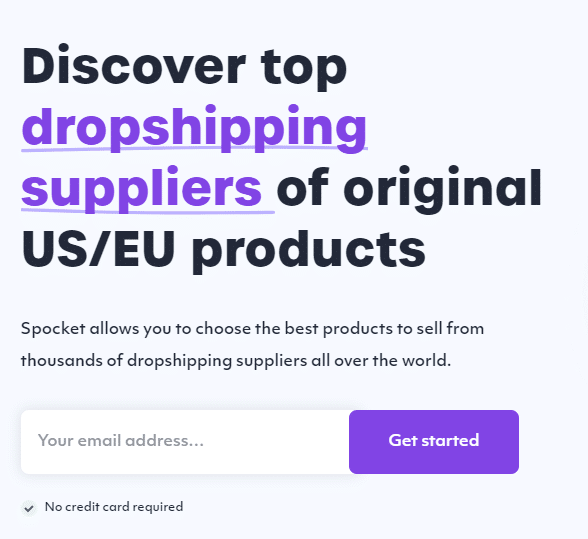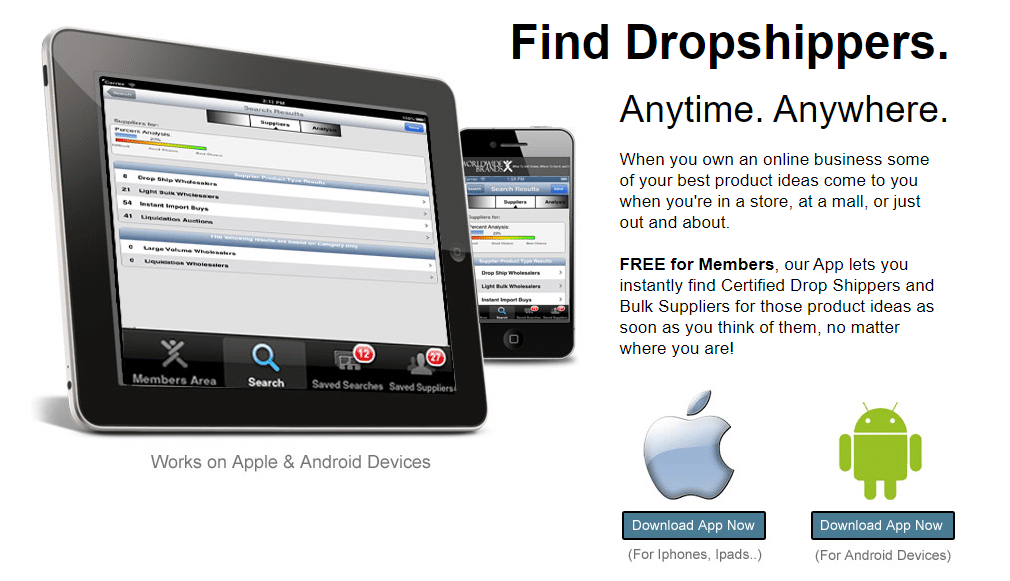Dropshipping is a way of selling products without purchasing inventory upfront and without shipping orders to your customers. It can work well when combined with blogging because it allows you to use content to attract traffic and generate sales. This gives you an advantage over traditional online stores, which tend to have very little content other than product descriptions.
How Does it Work?
Imagine that you have a blog about ‘smart gardening’ and want to monetize the blog by offering related products. For example, smart gardening kits, tools, and accessories. You decide that instead of going down the affiliate route, you want to sell products directly from your blog (or perhaps you want to do both).
Rather than purchasing inventory and shipping items to customers each time you make a sale, you pass the customer’s order to a supplier, who then ships the item/s to the customer.
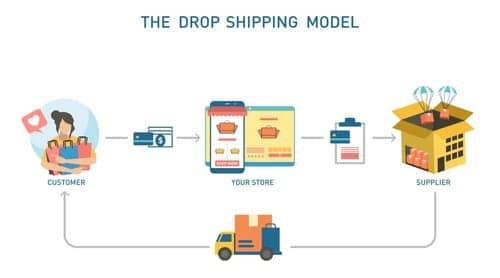
Therefore, you do not need to buy or store inventory, and you do not need to pack and ship the orders.
Sounds like a good deal!
It is, but there are some downsides to be aware of too. Let’s run through the pros and cons.
The Upsides
The Downsides
Okay, so providing none of those downsides are deal-breakers for you, how do you implement dropshipping on your blog?
Decide What You Want to Sell
What you sell should be relevant to the subject of your blog. If your blog is about DIY, for example, you could dropship materials and tools. If your blog is a food blog, you could dropship cooking equipment and utensils.
There are no limits to what you can potentially sell, but it's more difficult to sell expensive items than sell cheaper items. On the other hand, profit is often low on more affordable items and higher on the more expensive items (but not always!).
The best way to balance things out is to sell many different items with varying price tags. If possible, have some items that you can sell for under $10, some that you sell for $50+, and some in between.
Source a Dropshipping Supplier
There are three types of suppliers. Those who don’t require you to apply, those who do, and those who don’t, but charge a membership fee.
AliExpress is an example of a website where you can find suppliers who are open to everyone. There is no application process or membership fee. You can order from any supplier and have the item/s shipped directly to your customer. However, there are several downsides such as slow delivery times and the potential for customers to be charged import fees on their orders.
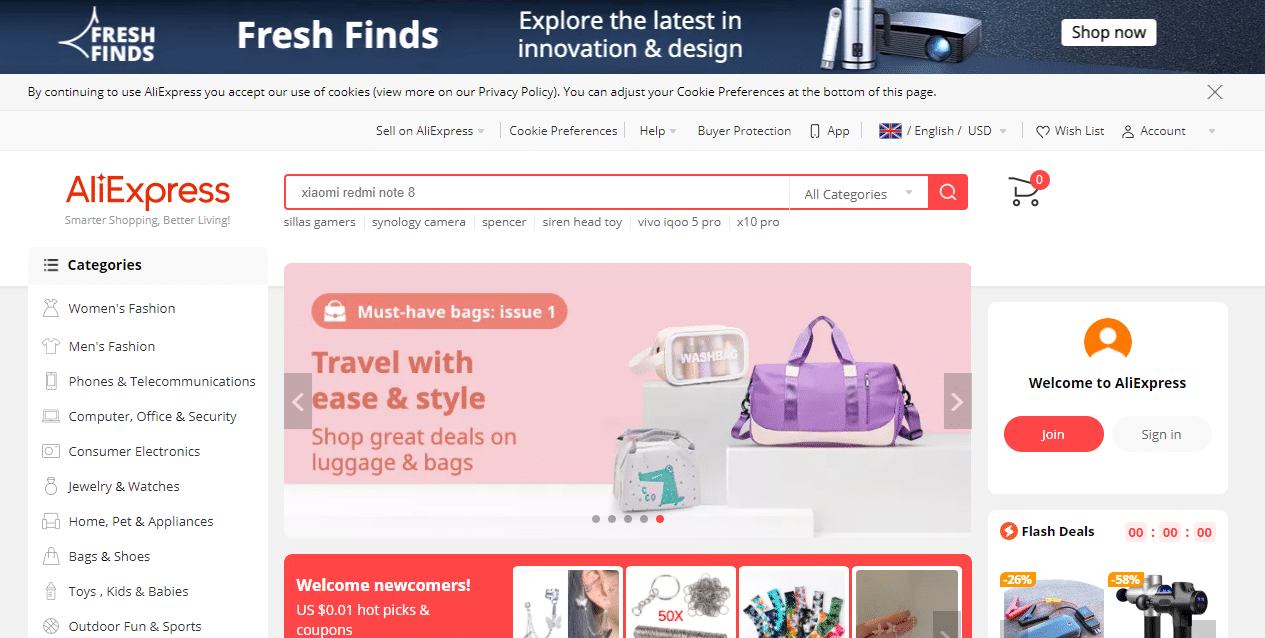
Examples of suppliers that require you to apply include Pet Stores USA and BryBelly.
https://www.brybelly.com/wholesale-drop-ship
https://petstoresusa.com/drop-shipping/
An example of a website that does not require you to apply but charges a monthly membership fee, is Spocket.
Which Type of Supplier is Better?
Usually, the best suppliers will want to know a few things about you and your website before they will allow you to dropship their products. They may ask you to complete a short online application form, but you should be able to get accepted quite quickly in most cases. The possible downside of these suppliers is that often, they do not have a way to integrate with your blog. Meaning there is more manual work involved.
Next in the hierarchy are the suppliers who do not ask that you complete an application form, but they have a membership fee. Mostly, the membership fee gives you access to a website where you can tap into multiple suppliers. Some of these websites are well worth the cost, but others are not.
Bottom of the list are the suppliers who don’t have any ‘barriers’ to entry. Anyone can tap into these suppliers. Products are often poorly packaged and delivery times can be long. AliExpress is in this category.
How to Find Suppliers
There's no magic trick to finding suppliers, and the quickest way to start is by doing a Google search.
Search for 'your niche+dropshipping' or 'your niche+dropship suppliers', or other similar search terms. For example, 'gaming dropshipping', or 'pet products dropshipping'.
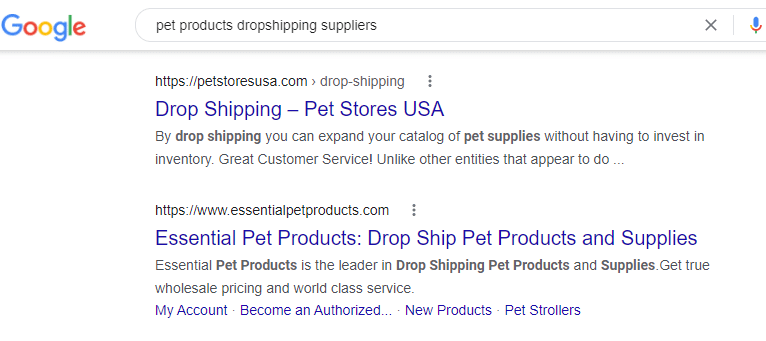
Don't be too specific with your search. Reason being that if you are too specific, you might not get many (or any) search results. If, for instance, you want to dropship polytunnel accessories. Start your search by looking for 'gardening dropshipping' and then go to the individual websites and look for polytunnel accessories.
Another way to find suppliers is by using a directory. Free directories can be useful but they are often outdated and suppliers listed have not been verified.
Paid directories can be a better option, but many paid directories are nothing more than lists of suppliers that you could just as easily find with a few quick Google searches.
But, there are some good ones:
World Wide Brands has been established since 1999 and is rated ‘Excellent’ on Trust Pilot. All the suppliers in the directory are vetted and verified. The biggest directory of certified suppliers on the Internet (according to the website).
Esources is another excellent directory with 3000+ dropshippers. However, it is more tailored towards UK dropshipping, although there are dropship suppliers in other countries. You can register for a free account first and look around to see what’s available before deciding if it’s going to be suitable for your needs
Applying for Approval
Sometimes you can access a registration form directly on the supplier’s website. Other times you may need to contact the supplier.
What kind of information might you be asked to supply?
Getting your Blog Ready to Apply
It would be pointless to apply to a supplier if your blog is not ready. So here’s what you should do before applying:
- 1Get your blog looking the part by making sure it gives a decent first impression. If you are not sure how your blog looks, post on the forum and ask for feedback 🙂
- 2Make sure that the T & C and Privacy pages are in place.
- 3Add a ‘Returns & Refunds’ page and a ‘Delivery Information’ page. Your returns and refunds policy must comply with the law in your country or state. The easiest way to find out is to look at a few established online stores in your country. Whatever they have on their refund and returns page will be fully compliant with the law.
- 4Add a ‘Contact’ page if you don’t already have one. You will need more than just a contact form when you plan to sell directly from your blog. Add an email address, and it really helps to install a chat app, for example, the Facebook Chat App for WordPress. https://wordpress.org/plugins/facebook-messenger-customer-chat/
- 5Install a shopping cart plugin. Woocommerce is the most popular shopping cart for WordPress and it’s free.
- 6Set up a way to accept payments from customers. Stripe is a popular payment processor that allows you to accept credit and debit card payments. Stripe is available to most sellers in most countries and can be set up through the Woocommerce plugin. Alternatively you could use PayPal*, or you could offer both.
- 7Add a few products for display purposes. Even if you only add five to ten products, it will be enough for the supplier to see something. Otherwise, when they look at the ‘Shop’ page on your blog (added automatically when you install the Woocommerce plugin), it will be completely empty.
The easiest way to do this is to grab a few products from the AliExpress** website (you can delete them afterward). There are several free plugins that you can use to import Aliexpress products. To find and install one, go to your WordPress dashboard - Plugins - Add new, and do a search for 'aliexpress dropship'.
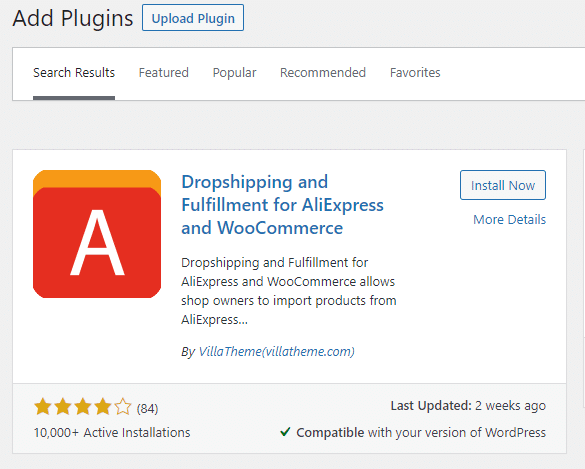
*Using PayPal:
To use PayPal for accepting payments, you will need a PayPal business account. It’s easy to upgrade a personal PayPal account to a business account. Or, you can open a second PayPal account (PayPal allows for two accounts. One personal account and one business account). Keep in mind that you can no longer use it for any personal transactions if you upgrade your personal PayPal account to a business PayPal account. For that reason, it’s often better to have two separate accounts.
**AliExpress
I'm not suggesting that you dropship products from AliExpress. Just that you add a few products from there in order to have something to show potential suppliers.
After approval by the supplier, you will be able to go ahead and upload products (for real this time!) to your blog. The way you do this is dependent on the supplier. Some suppliers can integrate with Woocommerce via an app or another plugin, but some can’t. Either way, the instructions will be provided to you.
And that’s it. Your blog is ready to start dropshipping 😊
Frequently Asked Questions
Q. Do I need to register as a business before I start dropshipping?
It depends where you live, and on the suppliers you choose. However, registering as a sole trader/sole proprietor is a quick and straightforward process and is usually free.
Q. Do I need any funds to start dropshipping?
You don’t need funds for purchasing inventory. But, you will need a small balance of, say, $100 - $200 because when a customer places an order on your blog, the payment for the order is not usually available to you for several days. In the meantime, you need to forward the order and the payment to the supplier.
Q. If I forward the order payment to the supplier, how do I make a profit?
There is a difference between the price you pay the supplier and the price you charge the customer. The customer pays the retail price, but you pay closer to the wholesale price. Your profit is the difference between the two.
Q. Is there a way to automate the process?
Some suppliers have apps that integrate with WordPress and allow to automate or semi-automate the process. Spocket, for example, is an app that integrates with Woocommerce (WordPress’s shopping cart) and connects with multiple suppliers in numerous categories.
Q. Can I dropship from AliExpress?
You can, and for many new dropshippers AliExpress seems like the obvious choice. It’s easy to set up and has millions of products to choose from. But, because of the long delivery times and potential customs fees (depending on which country your customers are in), AliExpress may not be a good choice.
Q. Will suppliers add my branding to the products being dropshipped to my customers?
In general, no. However, a few suppliers will include a packing slip with your logo, website, etc.
Q. Is it possible to dropship from multiple different suppliers?
Yes!
Q. What happens if a customer wants to return an item within the allowed time?
In most cases, the customer will return the item to you, and you will issue the refund (if applicable). If the item is faulty, you will be able to return it to the supplier for reimbursement. Even if the item is not defective, many suppliers will be happy to accept a return providing the product has not been used and can be resold.

